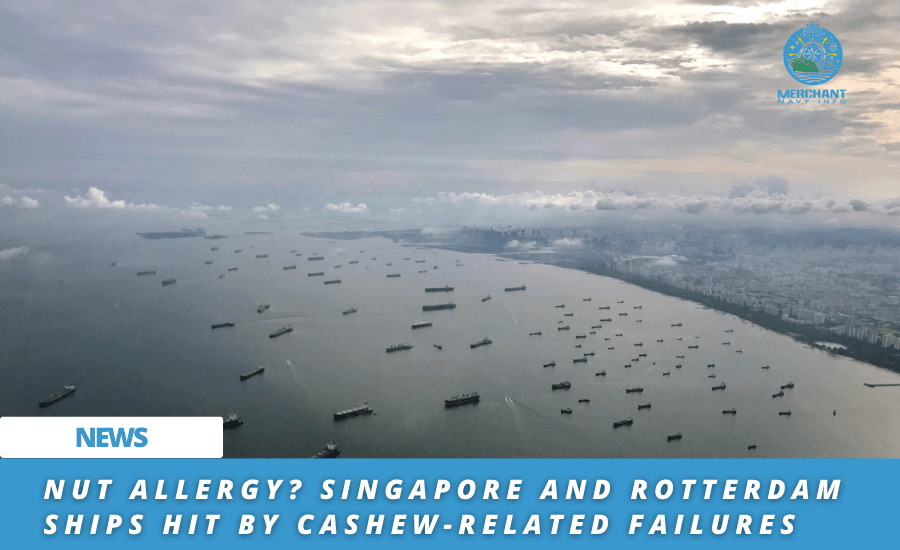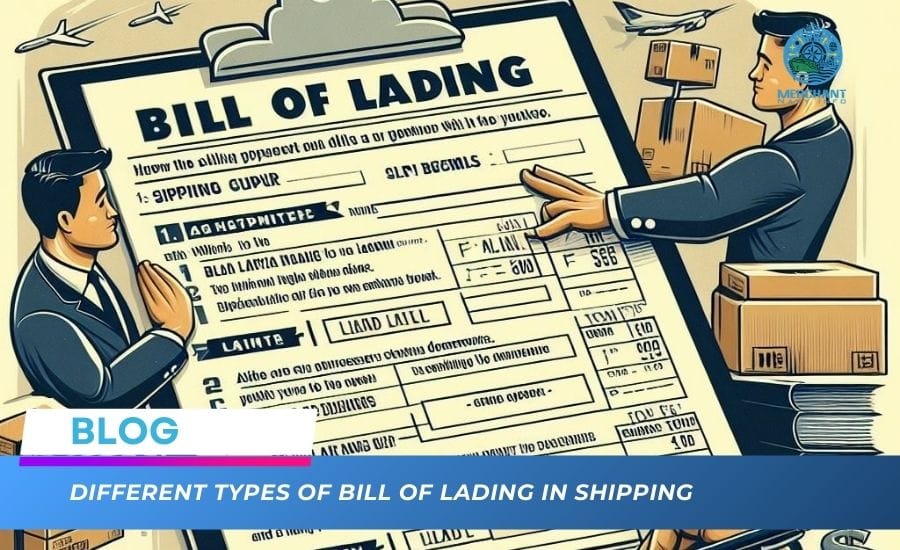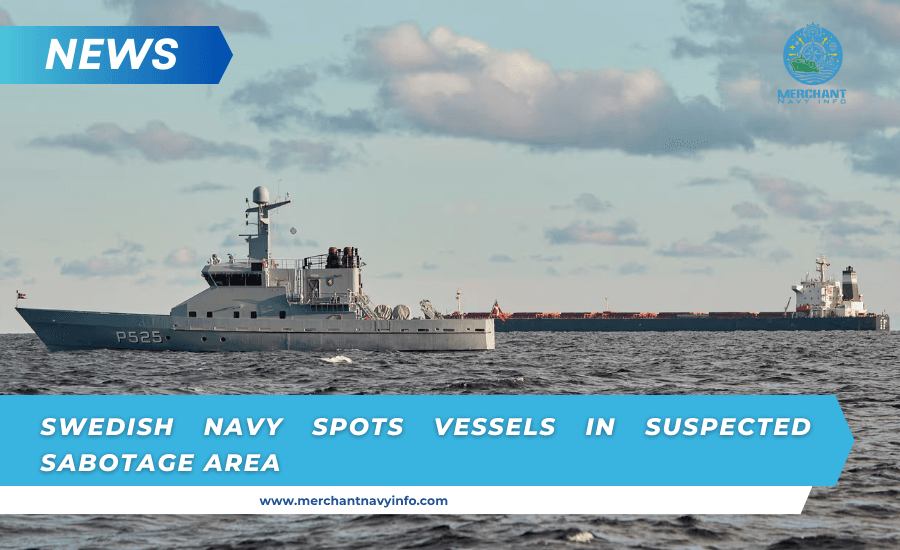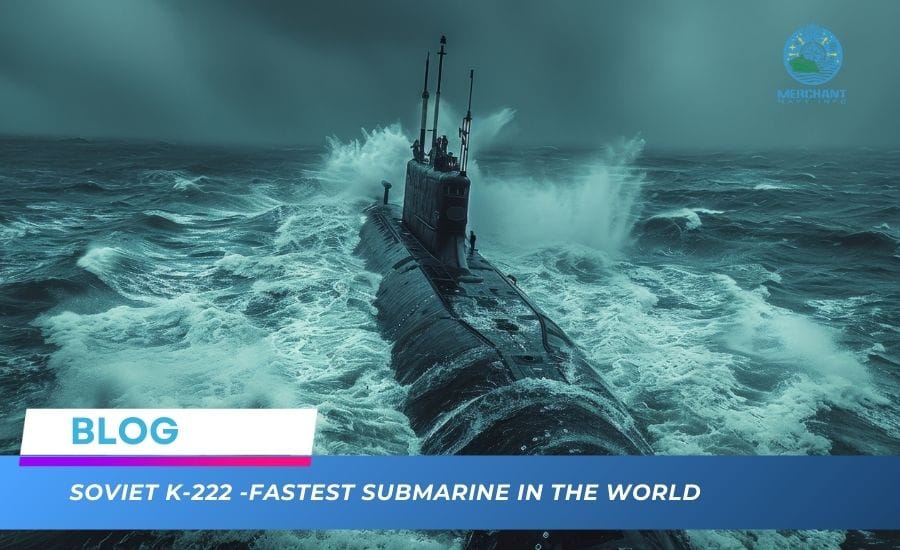
Everything You Need to Know About RoRo Ships
RoRo ships, which stand for “Roll On/Roll Off,” are an extremely efficient way to move cargo and vehicles overseas. They have become an integral part of the global logistics industry, facilitating the transport of a wide range of cargo, from cars and heavy machinery to project transport and even live animals. RoRo cargo is widely used due to its simplicity, cost-effectiveness, and ability to handle different types of cargo.
RoRo shipping offers a reliable and cost-effective way to transport vehicles, heavy machinery, and oversized cargo. Our experts have extensive experience handling RoRo shipping, ensuring your valuable assets are safely loaded and transported to their destination efficiently. Enjoy the simplicity of RoRo shipping with our expert handling of vehicles and oversized cargo.
Embark on a seamless journey into RoRo shipping with our comprehensive guide. Whether you are an experienced logistics professional looking to expand your knowledge or a curious individual looking to learn the ins and outs of this innovative shipping method, our Ultimate Guide to RoRo Shipping can help you on every front. This blog post is your passport to unlocking the potential of RoRo shipping and improving your freight transport like never before. Let’s set sail and explore the endless opportunities in RoRo shipping!
What is RoRo Shipping?
RoRo shipping is a special mode of transportation that allows cargo to be loaded on or off a ship using ramps or special facilities. Unlike traditional container shipping, where cargo is loaded into standardized containers and hoisted onto the ship, RoRo ships have open decks that accommodate different wheeled cargo types. It means that cars, trucks, buses, construction equipment, and other similar items can be driven right onto the coaster, hence the name “RoRo/RoRo.”
How RoRo Ships Work?
RoRo (RoRo/RoRo) ships are specifically designed to transport wheeled cargo, such as cars, trucks, buses, heavy machinery, and other types of vehicles. They are equipped with unique features that allow cargo to be efficiently transferred on and off the ship, simplifying loading and unloading operations compared to traditional container shipping. Understanding how RoRo ships operate can provide insight into the logistics behind this efficient mode of maritime transport.
Also read: What Are 7 Types Of Cargo Ships?
Vessel Design and Configuration:
RoRo ships are built specifically to accommodate wheeled cargo. They have large open decks with sturdy ramps at both the bow (front) and stern (stern). These ramps can be adjusted to different heights to accommodate different types of vehicles and cargo. The open design allows vehicles to be driven directly onto the ship, simplifying the loading process.
Loading and Securing Cargo:
When loading cargo, the crew lowers the appropriate ramps to dock level. The vehicles and machinery are then pushed onto the ship using the “RoRo” method of RoRo transport. Once on board, the cargo is securely parked and secured to the deck to prevent movement during transport.
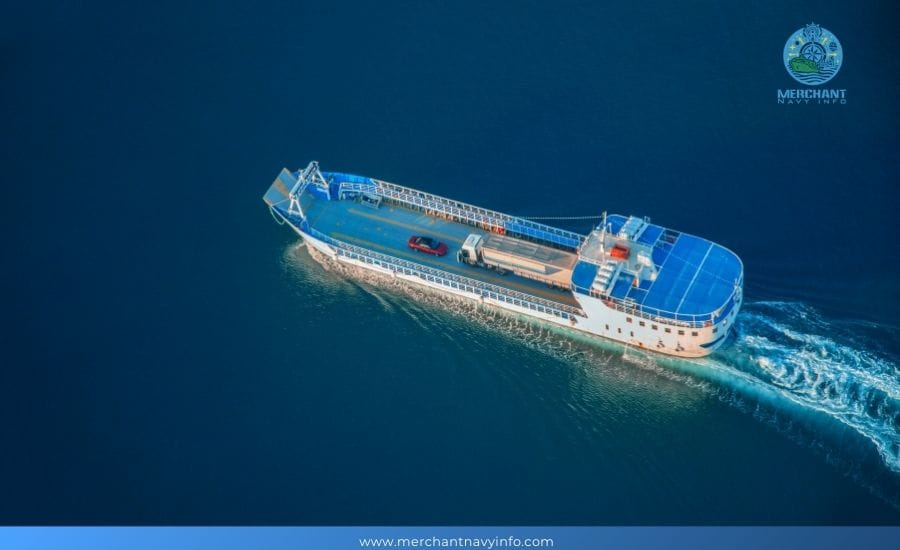
Interior Arrangements:
Inside a RoRo ship, the decks are organized to maximize cargo capacity and ensure cargo security. Multiple floors may be, with each vehicle carefully placed and connected to ensure stability. The crew strategically arranges cargo to optimize space utilization and maintain a balanced load distribution.
Safety Measures:
Safety is a top priority in RoRo transport. The crew is trained to handle and secure different types of cargo. In addition, the vessels are equipped with safety systems such as fire extinguishing systems, watertight doors, and emergency evacuation procedures. The open deck design allows for easy access to cargo in case of emergency.
Unloading Process:
Upon arrival at the destination port, the crew begins unloading. The RoRo vessel is moored parallel to the quay, and the appropriate ramp is lowered to match the quay’s level. The cargo is then unloaded from the vessel using the “RoRo” roll-on/roll-off transport method. Efficient unloading operations allow quick response, reduce port congestion, and facilitate timely deliveries.
Also read: 20 Best Shipping Companies In Merchant Navy
Specialized Facilities:
Some RoRo vessels are equipped with additional facilities to meet specific shipping requirements. For example, some ships may have a refrigerated section for transporting perishable cargo, while others may have special equipment for operating large or heavy machinery.
Port Infrastructure:
RoRo shipping relies on well-equipped ports and ample infrastructure to effectively accommodate the loading and unloading of wheeled cargo. RoRo terminals have ramps, designated parking spaces, and secure cargo storage areas.
RoRo ships offer an efficient and cost-effective way to transport wheeled cargo overseas. Their specialized design, loading and unloading operations, and ability to transport a wide range of vehicles and equipment make them an essential part of the global logistics industry. By streamlining the shipping process and reducing delivery times, RoRo ships play a vital role in facilitating international trade and the smooth flow of goods worldwide.
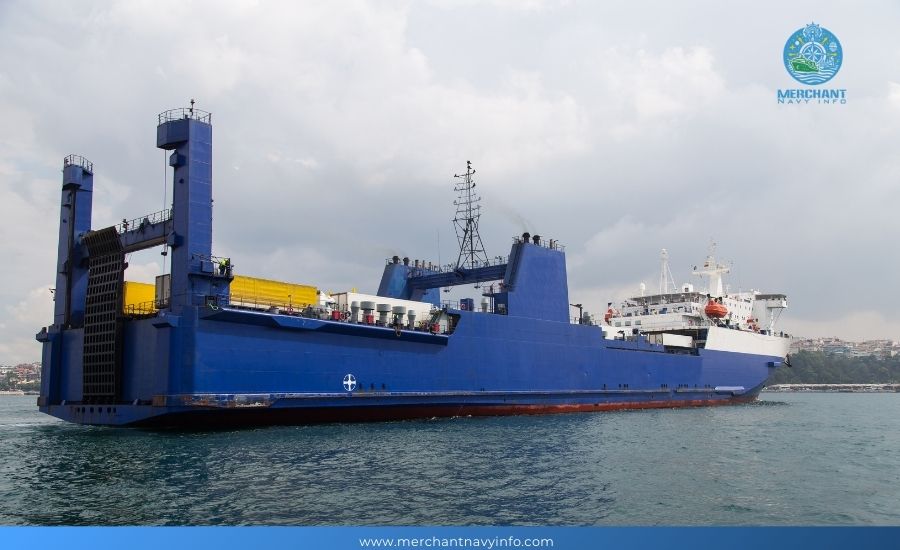
Types of Cargo Suitable for RoRo Shipping
RoRo (RoRo) shipping is a versatile and efficient mode of maritime transport that can accommodate different types of cargo. While the primary focus of RoRo ships is wheeled cargo, such as cars, trucks, and machinery, they can also handle other types of cargo that can be easily loaded and unloaded on board. Here are some of the most common types of cargo suitable for RoRo shipping:
Vehicles and Cars:
RoRo shipping is popular for transporting cars and other vehicles. Cars, trucks, SUVs, motorcycles, and buses are regularly transported using RoRo ships. Open decks and specially designed ramps allow vehicles to be easily loaded on and off the ship, making it an efficient and cost-effective choice for automakers and vehicle transporters.
Heavy Machinery and Equipment:
RoRo ships can transport a wide range of heavy machinery and equipment, such as construction machinery (excavators, bulldozers, cranes), agricultural equipment (tractors, harvesters), and industrial machinery. Their large open decks and adjustable ramps can accommodate oversized and heavy cargo, simplifying loading and unloading operations.
Bulk and Project Cargo:
RoRo shipping is suitable for handling bulk cargo, which refers to non-containerized cargo that is too large or irregularly shaped to fit into a standard container. Examples include lumber, steel, large pipes, generators, turbines, windmill parts, and industrial machinery. RoRo ships are flexible in cargo handling and can accommodate a variety of shapes and sizes.
Live Animals and Refrigerated Cargo:
Some RoRo ships have facilities for transporting live animals, such as cattle and horses, under humane, controlled conditions. Additionally, some ro-ro vessels have refrigerated areas (refrigerated cargo) for transporting temperature-sensitive products such as fresh produce and pharmaceuticals.
Long and heavy cargo:
Ro-ro transport is ideal for long and heavy cargo, which includes items that may not fit into standard containers or other modes of transport. Examples include:
- Tall cranes.
- Large vehicles with raised bodies.
- Heavy machinery of unusual dimensions.
Ro-ro and traceable cargo:
Ro-ro vessels can carry ro-ro and traceable cargo and wheeled cargo. It includes cable drums, large rolls of paper, and tracked vehicles that can be rolled or driven on board (e.g., tanks).
It is important to note that while ro-ro transport is suitable for many types of cargo, there are limitations. The load must be self-propelled or capable of loading and unloading using suitable rolling equipment. In addition, the cargo must be properly secured to ensure safety during transport. For certain delicate or sensitive cargoes, other modes of transport (e.g., container transport) may be more appropriate.
Also read: What Is The 10 Major Ports in Greece?
However, ro-ro transport offers various options for transporting different types of cargo. Their versatility, efficiency, and cost-effectiveness make them popular with industries and individuals looking to transport wheeled and rolled goods overseas.
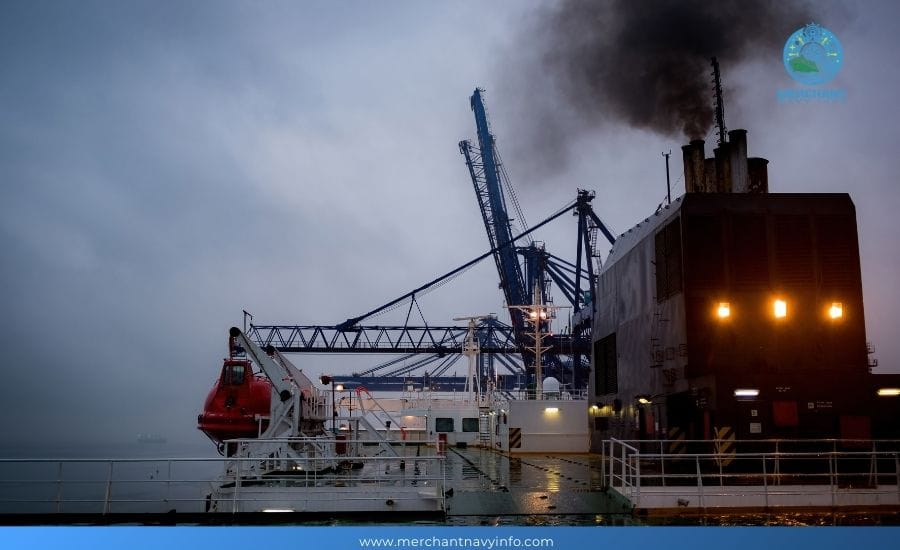
Advantages of RoRo Shipping
RoRo shipping offers several key advantages that make it a preferred choice for transporting certain types of cargo:
Efficiency:
Loading and unloading operations are faster and more flexible than container shipping operations. It will decrease waiting time at ports and allow for faster deliveries.
Cost-effectiveness:
Ro-ro shipping is more cost-effective for large, heavy loads or vehicles because it does not require specialized lifting and container handling equipment.
Versatility:
Ro-ro ships can transport various cargo, from small cars to large machinery, making them suitable for various industries.
Reduced risk of damage:
With proper insurance and storage, Ro-ro shipping can reduce the risk of cargo damage during transportation compared to other modes of transportation.
Environmentally friendly:
Ro-ro ships generally have a lower carbon footprint than air freight and other shipping alternatives, making them a more environmentally friendly option.
Prepare your cargo for Ro-ro shipping.
Preparing your cargo for Ro-ro shipping is essential to ensure smooth and efficient transport.
First, thoroughly clean and remove all personal belongings from the vehicle or machinery to comply with shipping regulations.
Secure the load for transportation by removing loose parts and accessories and ensuring the tanks are filled.
Also read: Firefighting and Battery-Powered Electric Vehicles
Properly document the cargo, including any required import and export documents, and comply with customs requirements in the countries of departure and destination.
Additionally, consider purchasing cargo insurance to protect against potential damage during transportation.
By taking these necessary steps, you can help ensure that your cargo is ready for ro-ro transportation and reduce potential delays or issues during transportation.
Costs and Rates of Ro-Ro Shipping
Ro-ro shipping costs and rates depend on factors that affect the shipping cost via ro-ro vessels. The main cost drivers include:
- The volume and weight of the cargo.
- The distance between the origin and destination ports.
- The type of cargo being transported.
- The demand for ro-ro services at a particular time.
Additionally, fuel prices and operating costs affect the pricing structure. Ro-Ro freight rates are typically calculated based on cubic meters, weight, or batch cubic meters of cargo. Surcharges associated with specialized equipment, customs clearance fees, insurance premiums, and port handling charges must be considered.
Comparing quotes from multiple ro-ro providers and understanding the different cost components will help shippers make informed decisions to optimize their shipments while effectively managing expenses.
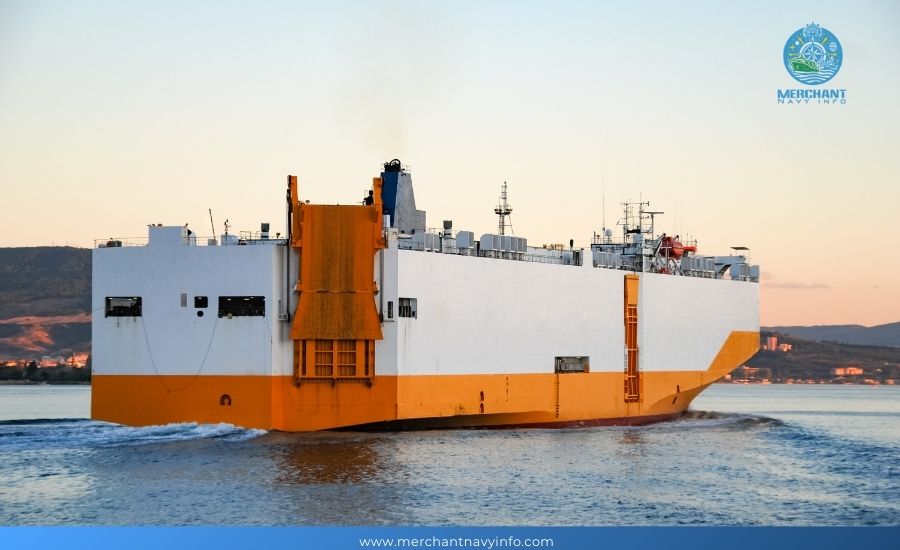
Standards and Compliance in Ro-Ro Shipping
Standards and compliance are vital in ro-ro shipping to ensure safe and efficient cargo transportation in international waters. RoRo shipping is subject to various international maritime laws and regulations, such as the International Convention for the Safety of Life at Sea (SOLAS) and the International Maritime Dangerous Goods Code (IMDG). These standards cover vessel safety, cargo stowage, insurance procedures, and emergency response protocols.
Also read: What Are The Top 10 Largest Natural Harbors?
In addition, the country of departure and destination must comply with customs and import and export regulations. Compliance with environmental regulations, such as preventing marine pollution, is also critical. RoRo shippers must maintain high standards in vessel maintenance, crew training, and safety protocols to meet regulatory requirements and ensure responsible and sustainable shipping practices.
Carriers and shippers must work together to ensure full compliance with these standards to protect the well-being of crews, protect the environment, and facilitate smooth and legal international trade.
Conclusion
In summary, RoRo shipping provides an efficient and versatile way to transport a wide range of cargo, from vehicles and heavy machinery to bulk and project cargo. Roll-on load designs simplify loading and unloading, reduce response time, and increase profitability. However, successful RoRo shipping requires careful cargo preparation and compliance with international standards and customs requirements.
As the industry grows and technology advances, RoRo shipping is expected to remain an important part of the global logistics landscape, providing a reliable and sustainable solution for transporting goods in international waters.


